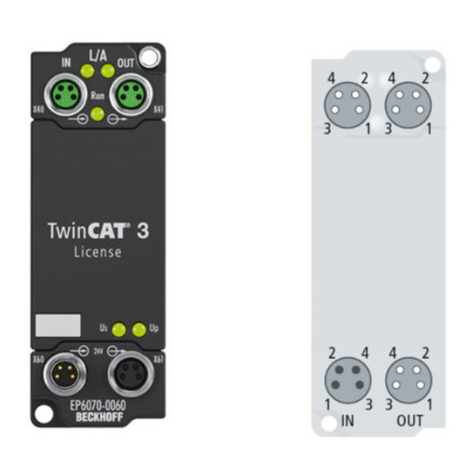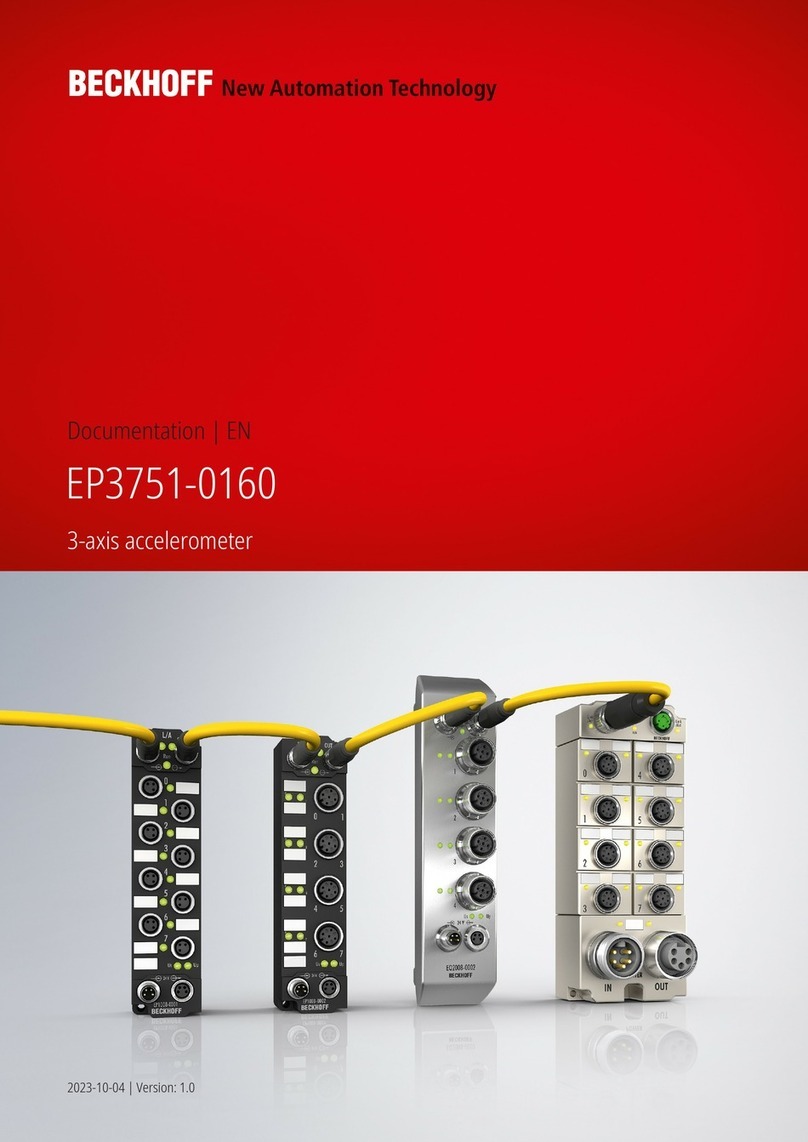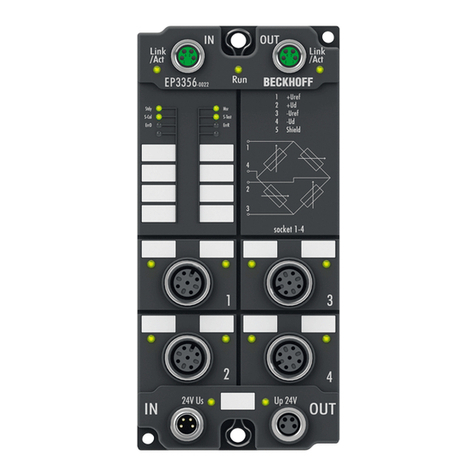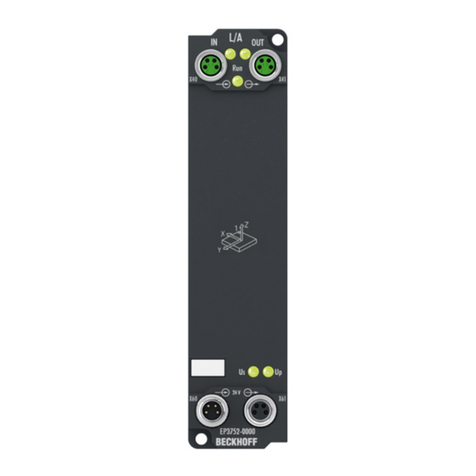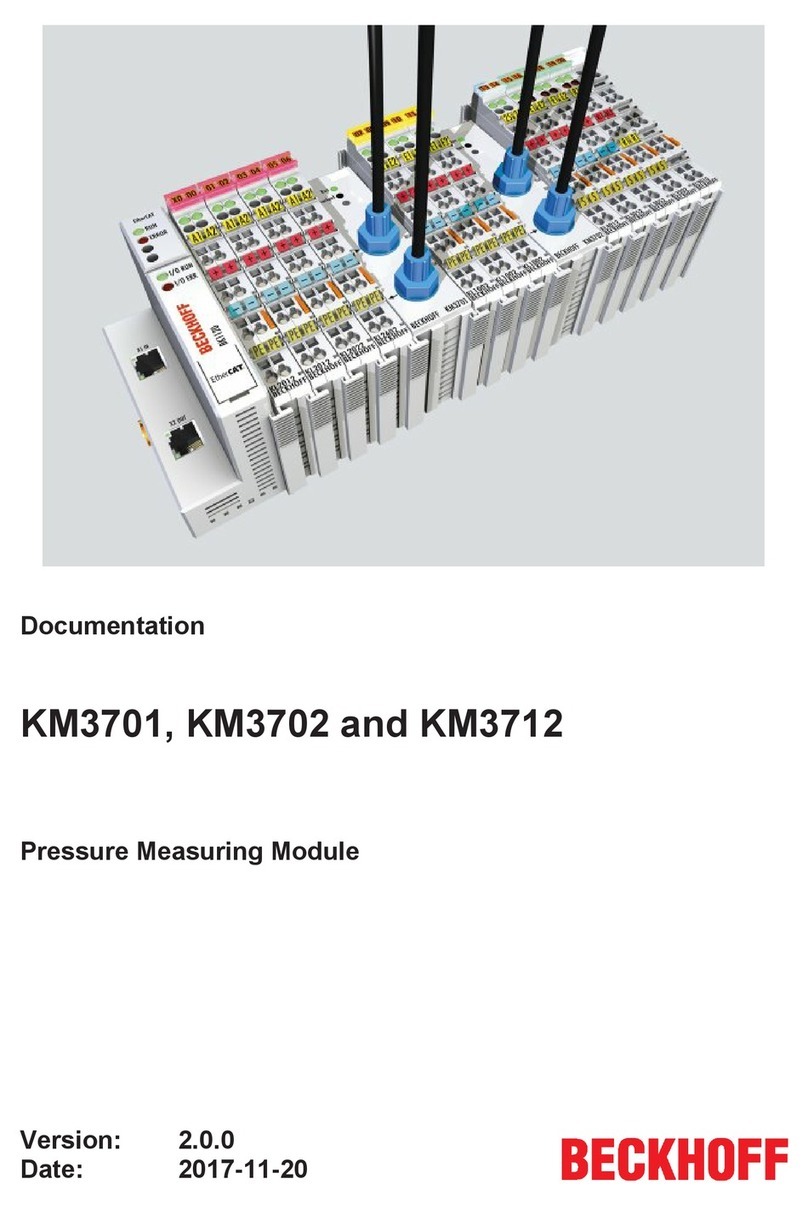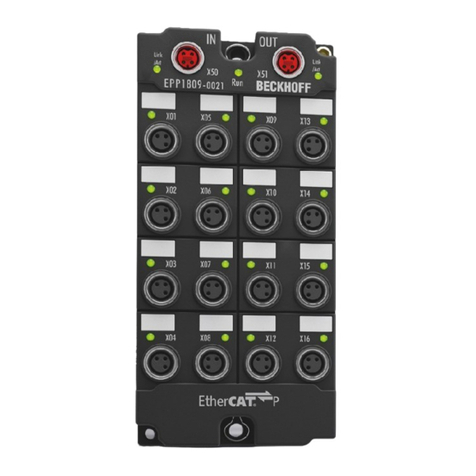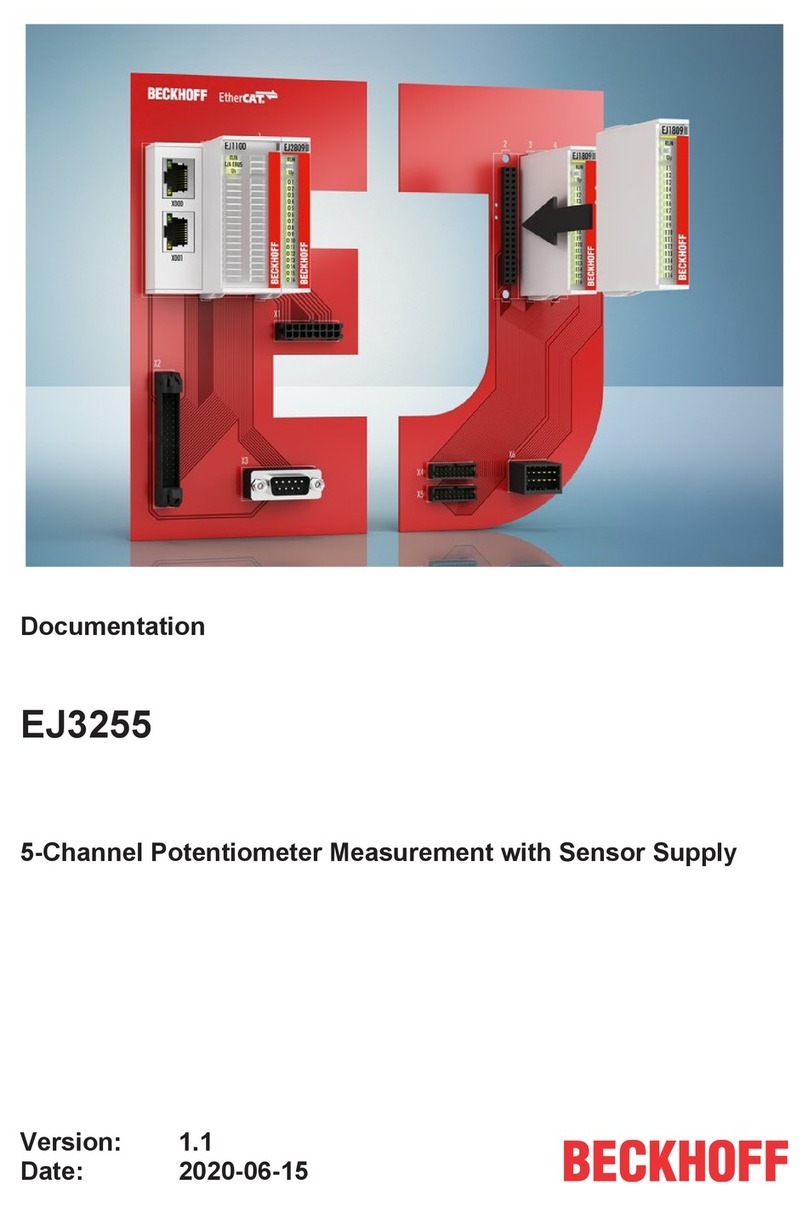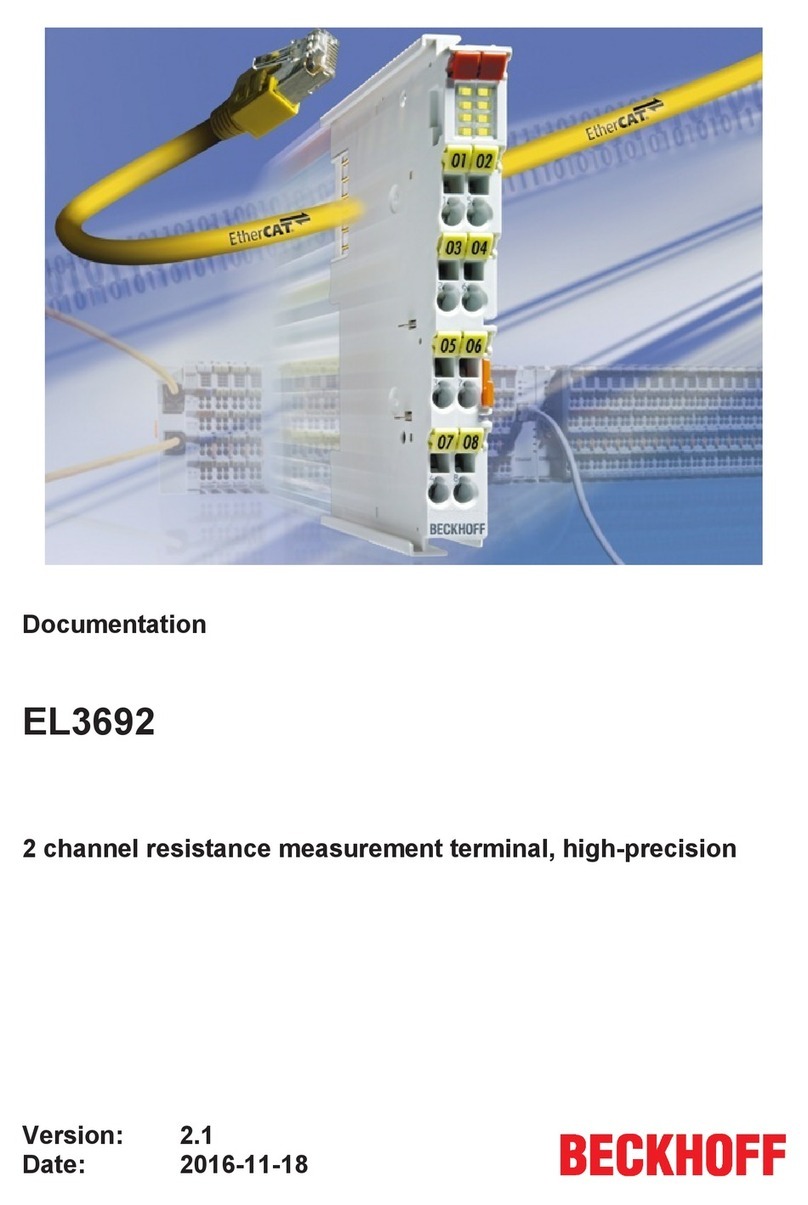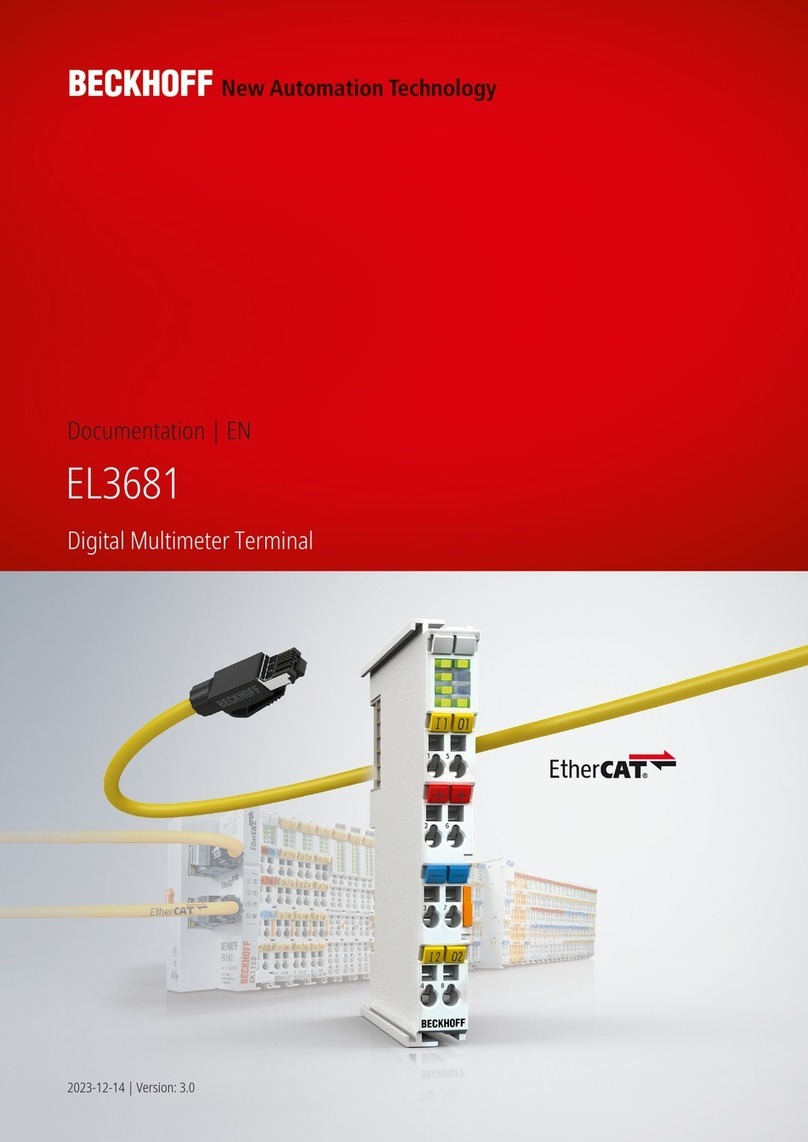
Table of contents
EPP3504-00234 Version: 1.2
4.2.18 0x90n0 PAI Internal Data Ch.[n+1] .................................................................................. 73
4.2.19 0x90n2 PAI Info Data Ch.[n+1] ........................................................................................ 73
4.2.20 0x90nF PAI Calibration Dates Ch.[n+1] ........................................................................... 75
4.2.21 0xF000 Modular device profile.........................................................................................80
4.2.22 0xF008 Code word...........................................................................................................80
4.2.23 0xF009 Password Protection ...........................................................................................80
4.2.24 0xF010 Module list...........................................................................................................81
4.2.25 0xF083 BTN.....................................................................................................................81
4.2.26 0xF900 PAI Info Data.......................................................................................................81
4.2.27 0xF912 Filter info .............................................................................................................81
4.2.28 0xFB00 PAI Command ....................................................................................................82
4.2.29 0x80n0:01 PAI Settings.Interface.....................................................................................83
4.3 Sample programs............................................................................................................................84
4.3.1 Sample program 1 and 2 (offset/gain).............................................................................. 85
4.3.2 Sample program 3 (write LookUp table) .......................................................................... 91
4.3.3 Sample program 4 (generate LookUp table)....................................................................93
4.3.4 Sample program5(write filter coefficients)......................................................................94
4.3.5 Sample program 6 (interlacing of measured values) ....................................................... 97
4.3.6 Sample program 7 (general decimation in the PLC) ...................................................... 101
4.3.7 Sample program 8 (diagnosis messages)...................................................................... 106
4.3.8 Sample program 9 (measuring range combination).......................................................107
4.3.9 Sample program 10 (FB for real time diagnosis) ........................................................... 111
4.3.10 Sample program 11 (scripts for generation and transformation of filter coefficients)..... 114
4.3.11 Sample program 12 (R/W signature of calibration)........................................................114
4.3.12 Sample program13: Reading the BIC from the CoE.....................................................116
5 Features .................................................................................................................................................118
6 Commissioning on EtherCAT Master.................................................................................................. 119
6.1 General Commissioning Instructions for an EtherCAT Slave .......................................................119
6.2 TwinCAT Quick Start.....................................................................................................................127
6.2.1 TwinCAT 2 .....................................................................................................................129
6.2.2 TwinCAT 3 .....................................................................................................................139
6.3 TwinCAT Development Environment ............................................................................................152
6.3.1 Installation of the TwinCAT real-time driver ................................................................... 153
6.3.2 Notes regarding ESI device description ......................................................................... 159
6.3.3 TwinCAT ESI Updater....................................................................................................163
6.3.4 Distinction between Online and Offline .......................................................................... 163
6.3.5 OFFLINE configuration creation..................................................................................... 164
6.3.6 ONLINE configuration creation ...................................................................................... 169
6.3.7 EtherCAT subscriber configuration ................................................................................ 177
6.3.8 Import/Export of EtherCAT devices with SCI and XTI.................................................... 186
6.4 EtherCAT basics ...........................................................................................................................192
6.5 EtherCAT cabling – wire-bound ....................................................................................................192
6.6 General notes for setting the watchdog ........................................................................................193
6.7 EtherCAT State Machine ..............................................................................................................195
6.8 CoE Interface ................................................................................................................................197
